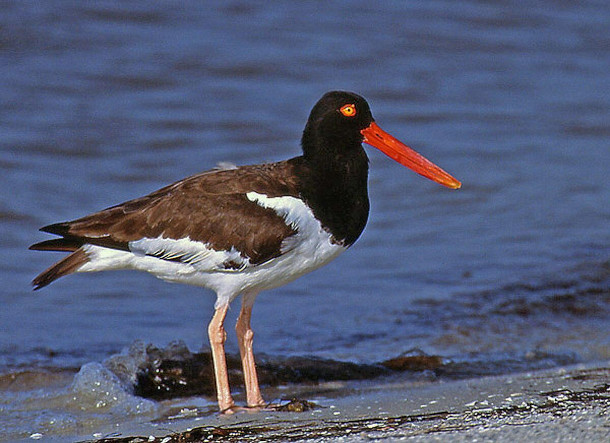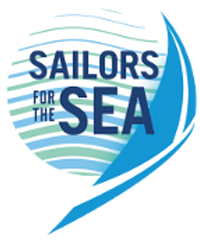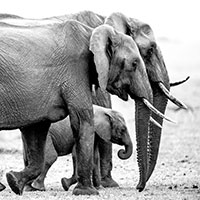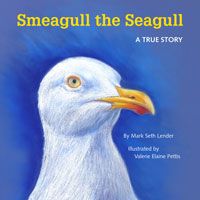Oystercatchers Bounce Back
Air Date: Week of May 16, 2025

An American Oystercatcher in the sand of San Carlos Bay, Florida. (Photo: Peter Wallack, Wikimedia Commons, CC BY-SA 3.0)
The American oystercatcher is a conservation success story thanks in part to efforts to educate the public and protect their ground nests from unaware beachgoers. Host Aynsley O’Neill shares with Host Steve Curwood the story of how conservationists worked together to boost the numbers of this charismatic species.
Transcript
CURWOOD: It’s Living on Earth, I’m Steve Curwood.
O’NEILL: And I’m Aynsley O’Neill. So, Steve, I know you, like many of our listeners, are a birding aficionado. I want to know if you recognize this.
[OYSTERCATCHER CALL]
CURWOOD: Hmm…brings up images of a sandy beach and a blue ocean, Aynsley, I think it sounds like a shorebird to me.
O’NEILL: Got it in one, Steve, that is an American oystercatcher. It’s the focus of a major conservation win for shorebirds, which, as I understand it, is a particularly vulnerable category of birds.
CURWOOD: That’s right, I think a study came out a few years back that show that a majority of American shorebird species were in decline, something like 90%. And I’m not sure I’ve ever seen an oystercatcher. What’s this bird like, and how much of a conservation success is it?
O’NEILL: It’s a big success, and I’ll tell you how it’s recovery is still moving ahead in a moment. But you can start with understanding it’s a pretty fun bird, Steve, I’ve found some great pictures while looking into this story. And we’ll post some of those pictures to be sure, but here’s a descriptor from someone who knows a little more than I do.
HURDLE: It’s this fairly large shorebird with a black head and a black back and a very large bright red bill and red eyes. And, and it has, some might say, a sort of comical appearance and, and so it was seen as being a prime candidate for a concerted conservation campaign.
O’NEILL: That’s journalist Jon Hurdle, from our media partner Inside Climate News, who I called up after reading his article about the American Oystercatcher Recovery Campaign.
CURWOOD: Okay, now I’ve got a picture in my mind. A bright red bill definitely sounds distinctive.
O’NEILL: And their feathers are too, they were actually nearly hunted to extinction in the 19th century for their plumage, as well as their eggs.
CURWOOD: Ah, so is that the focus of the recovery campaign?
O’NEILL: Actually, the species mostly managed to rebound after the Migratory Bird Treaty Act in 1918. But today oystercatchers have to contend with habitat loss, nest disruption, pollution, climate change and more, and all that led to its decline. Here’s Jon Hurdle again.
HURDLE: Like many other shorebird species, its numbers were declining all around its American range, which goes all the way down the Atlantic coast and throughout the Gulf Coast as well. And, the conservation team that I've been writing about, they chose the oystercatcher because, partly because it was a charismatic species.
O’NEILL: So, the campaign came together with a coalition of around 40 different nonprofits and government agencies, all working to keep this charismatic species alive and well. The lead of the campaign is a shorebird scientist at Manomet Conservation Sciences named Shiloh Schulte.
SCHULTE: We in the conservation community looked at this whole assessment of all these different shore bird species and said, which ones are at risk? Oystercatchers rose to the top as one of the species that was most in need of conservation because they have a very restricted range. They're only found right along the coast and only in a limited area of the coast, and then they have very low nest survival.
CURWOOD: So, as Jon said, they might be found up and down the coasts of the United States, but sounds like they’re pretty picky about their habitat.

Oystercatcher populations have rebounded around 45% since the recovery campaign began in 2008. (Photo: Matthew Paulson, Flickr, CC BY-NC-ND 2.0)
O’NEILL: Exactly. Shiloh told me these birds are at particular risk from both natural and human factors. See, oystercatchers don’t make nests in a tree, but rather lay their eggs on the ground right above the high tide line.
SCHULTE: They’re susceptible to things like a storm coming and washing out the beach and washing their eggs away, but also a human walking along the beach and stepping on their eggs, or driving on the beach and running them over, which has happened, or simply just going and putting down your beach blanket and hanging out for an hour 20 feet from an oystercatcher nest, you don't realize it's there. The birds stay off the nest. The eggs get exposed to sun. And there's all sorts of things that can happen as a result of human intervention or human interaction that causes these nests to fail. And that's what was happening.
CURWOOD: Nesting on the ground will definitely make a species vulnerable. And I remember hearing the whippoorwill often in my youth that simply isn’t around much anymore for that very reason.
O’NEILL: And according to Shiloh, that’s basically why the campaign’s ultimate success came not from oystercatcher management, or even ecosystem management. It came from people management.
SCHULTE: So where humans come in is that if we are out there just having fun on the beach, we can inadvertently cause an oystercatcher to lose its entire season's worth of effort on trying to raise babies so it can lose the eggs, lose the chicks. What we do is we, we sometimes will put up fences or like posting signs that say, bird nesting area, please keep out. But humans are not good at reading signs. They're not good at following directions, and they don't necessarily understand why this matters. You know, they're just out there for a little bit. So we have somebody that goes out there and has these conversations like we're having right now about oystercatchers, like, why do I care about oystercatchers?
CURWOOD: So that that was the bulk of the campaign’s efforts. And you said this was a conservation win; so how successful has it been?
O’NEILL: When the campaign started out in 2008, there were around 10,000 oystercatchers in the entirety of North America. Which, to be clear, is still pretty good for a shorebird species. But the Oystercatcher recovery team knew they could do better, and by 2023, 15 years later, they were up to about 15,000. A lot of that came from when the campaign started to collaborate with the US Fish and Wildlife Service and the National Fish and Wildlife Foundation.
SCHULTE: We very, very quickly started to see a turnaround in the numbers. We started to see more baby oystercatchers hatching, more baby birds fledging, making it to adulthood, and then those adults surviving long enough to get to adulthood, which takes about four years for an oystercatcher coming back to the beaches and then starting their own broods and nests and that success started to build. And when that happened, we started getting more and more organizations wanting to be involved, bringing their own resources into the group.
CURWOOD: That’s a sizable jump, but I wonder what will happen with all these government budget cuts and the like. I mean, how vulnerable is this success right now?
O’NEILL: I thought the same thing, Steve. Here’s Shiloh again on that.
SCHULTE: It's a fragile increase because it requires yearly, annual management. It's not something we can point to and say we're going to walk away and be done. There's the existential threats, like sea level rise that could wipe out huge sections of habitat. There's coastal erosion and all kinds of things that are a risk for this species. But right now, and over the last 15 years, the work that we've been doing is showing the results that we were hoping for, maybe even better than we were hoping for.
O’NEILL: Although the recovery is definitely vulnerable, it’s still been a massive win for conservation. And now, the American Oystercatcher Recovery Campaign wants to try to extend their practices to other struggling shorebird species. And with any luck, those recovery campaigners can feel the same way Shiloh has after years dedicated to this project.
SCHULTE: When I moved to Maine, there were no oystercatchers near me, and now there's a pair nesting just a few miles from my house, along the beach or along the coast. And so I can go down there, and I can see these oystercatchers that are here now because of the work of this group that I've been part of for the last couple of decades. And so it's, it's really gratifying. It's really exciting to see.
O’NEILL: So, Steve, definitely keep your eyes and ears peeled for those bright-billed birds when you’re at the beach this summer.
CURWOOD: I will, and I’m so glad to hear this good-news story, Aynsley!
O’NEILL: I know Steve, we all love good news!
Links
Learn more about the American Oystercatcher Recovery Campaign at Manomet
Living on Earth wants to hear from you!
Living on Earth
62 Calef Highway, Suite 212
Lee, NH 03861
Telephone: 617-287-4121
E-mail: comments@loe.org
Newsletter [Click here]
Donate to Living on Earth!
Living on Earth is an independent media program and relies entirely on contributions from listeners and institutions supporting public service. Please donate now to preserve an independent environmental voice.
NewsletterLiving on Earth offers a weekly delivery of the show's rundown to your mailbox. Sign up for our newsletter today!
 Sailors For The Sea: Be the change you want to sea.
Sailors For The Sea: Be the change you want to sea.
 The Grantham Foundation for the Protection of the Environment: Committed to protecting and improving the health of the global environment.
The Grantham Foundation for the Protection of the Environment: Committed to protecting and improving the health of the global environment.
 Contribute to Living on Earth and receive, as our gift to you, an archival print of one of Mark Seth Lender's extraordinary wildlife photographs. Follow the link to see Mark's current collection of photographs.
Contribute to Living on Earth and receive, as our gift to you, an archival print of one of Mark Seth Lender's extraordinary wildlife photographs. Follow the link to see Mark's current collection of photographs.
 Buy a signed copy of Mark Seth Lender's book Smeagull the Seagull & support Living on Earth
Buy a signed copy of Mark Seth Lender's book Smeagull the Seagull & support Living on Earth

